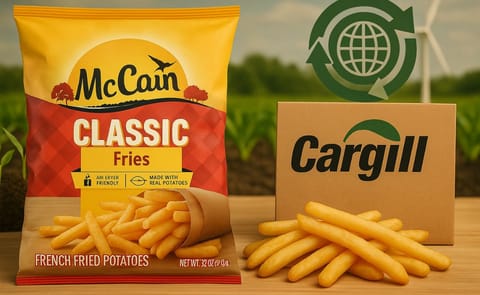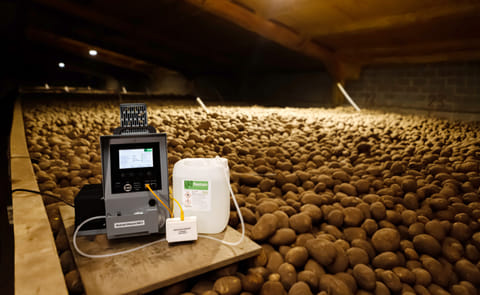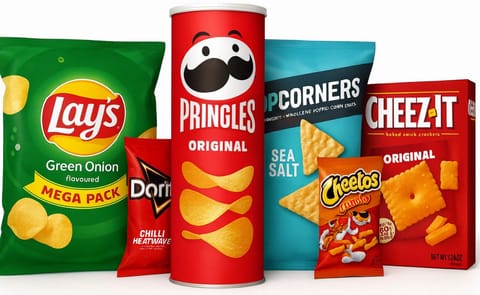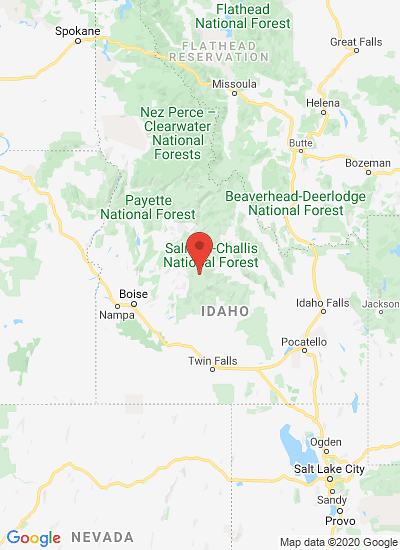North American potato processors either have or will be bringing at least 1.3 billion pounds of new processing capacity online between October 2018 and December 2019.
Will added North American potato processing capacity lead to increased acreage?
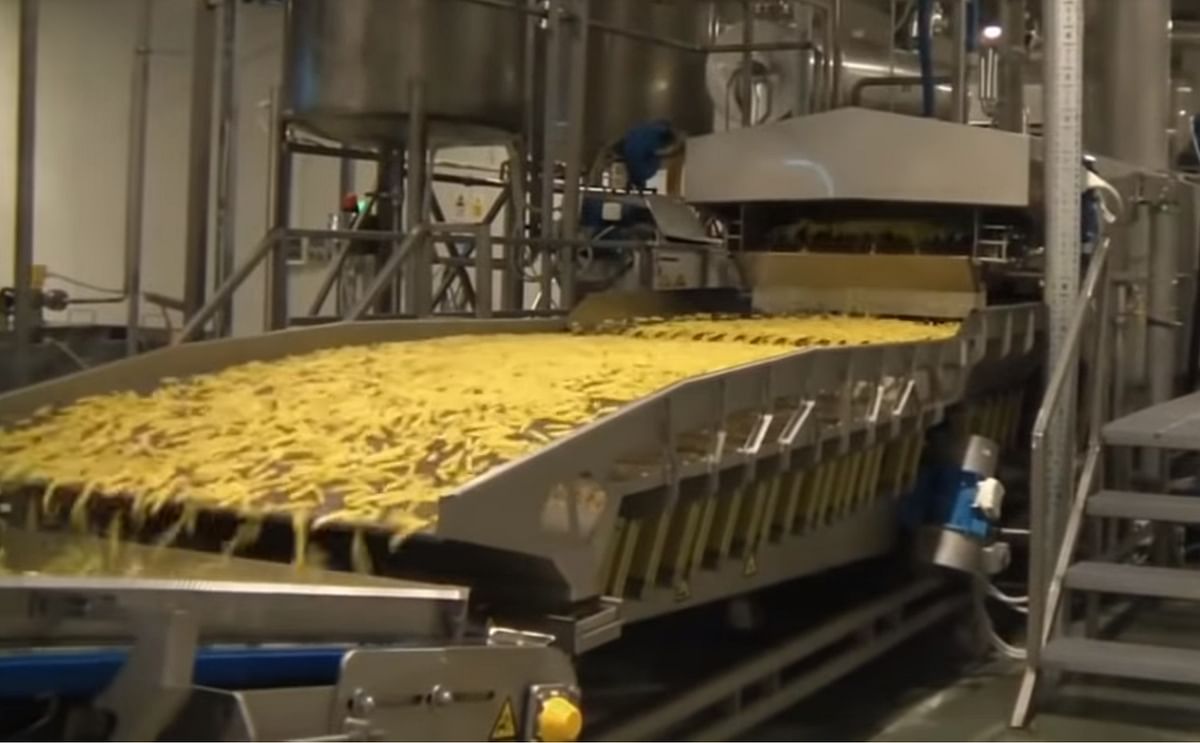
North American processors either have or will be bringing online as least 1.3 billion pounds of new frozen potato product processing capacity between October 2018 and December 2019.
That is roughly an 8 percent expansion in about 16 months. When the new lines operate at capacity, they will use between 20 million and 21 million cwt of potatoes per year.
Since the new facilities are spread between growing areas in the Columbia Basin, Idaho, Alberta and Manitoba, the impact on needed acreage will be dependent upon expected yields in those growing areas. We believe that the total area increase needed to support the new capacity will be between 44,000 and 47,000 acres.
Some of those potatoes were under contract for the 2018 crop, but the last of the announced expansions will not come online until December 2019. Therefore, the earliest that we will see the full impact of this expansion will be the 2020 crop.
Will fryers be able to market the extra product that these plants are capable of producing? Can we expect further expansion in the frozen product sector? How will this expansion impact the potato industry in general? These are just a few of the questions that the recent spurt in investment raises.
North American processing capacity remained relatively flat for almost 20 years as the industry consolidated following a period of rapid expansion in the 1970s and 1980s.
While fryers built new plants during that time, they idled older and less-efficient facilities in order to create a better balance between capacity and sales.
The current round of expansion should ease capacity utilization rates, at least temporarily. Our sources indicate that the most efficient plants have been running at 105 percent of design capacity in recent years.
That is not sustainable in the long run. It means that processors have had to defer maintenance on plants in order to cover their customers’ needs. The new capacity should allow fryers to perform maintenance on older plants over the next one to two years, which will sop up some of the capacity coming online.
Increasing Demand
Demand for French fries continues to grow, both globally and within the United States. All-day breakfast has been a force that has boosted U.S. domestic sales 4 percent per year for the last two years.
Though the impact of that shift in demand is likely to dissipate, there is a great deal of pent-up demand from QSR operators that have been unable to procure product for menu extensions. We believe that U.S. domestic demand will continue to increase at a 2 percent annual rate for the next several years.
Internal EU demand for French fries has been growing at a 4 percent average annual rate since 2003. Global trade in markets outside of the major French fry producing areas has been growing at an 8.6 percent annual rate during that time. When we combine the growth rate for those three market segments, the evidence suggests that the world needs to increase French fry production by about 1.1 billion pounds per year for the foreseeable future. Currently planned expansion in the U.S. and Canada covers about 1.25 year’s growth in world French fry demand.
Competing Globally
Competing with European fryers will be a major challenge for the North American French fry industry. During the last five years, European fryers have captured 78.4 percent of the growth in global French fry trade, while North American processors have only been able to supply 8.4 percent of the growth.
Strong domestic demand and a lack of processing capacity are two factors that have slowed offshore exports from North America.
However, stiff competition from European product is likely to continue, even as the North American capacity expands.
Europe experienced a crop failure in 2018, but North American processors were not positioned to take advantage of the resulting French fry supply shortfall. The 2018 losses have not cooled European fryers’ appetite for expansion.
Clarebout Potatoes, a Belgian company that has become Europe’s largest potato processor, recently announced plans for a new €300 million plant capable of using over 26 million cwt of potatoes per year. While it will take some time for the new plant to come online, it will have more capacity than the combined processing expansions currently underway in North America.
For North American fryers to supply domestic markets and capture 30 percent of the growth in the global market, processing capacity would need to expand by 400 million pounds per year. That may create issues for the industry in the future. The challenge is that the economic production line size for the French fry industry is now 300-400 million pounds.
Three processors, Lamb Weston, McCain Foods and Simplot, dominate the North American industry, while Cavendish Farms is also in expansion mode.
None of these companies is likely to be idle while their competitors build new production lines, for fear of losing market share. Therefore, capacity expansion could come in increments of 1.2-1.6 billion pounds. That creates the potential for three to four years of incremental capacity to come online simultaneously. That could result in bidding wars between processors to fill the new capacity. We doubt that the current round of expansion will create a problem, but future expansion rounds are likely to be problematic.
Adding Acreage
Will growing French fry demand lead to increased potato acreage in the U.S. and Canada? Growers will be encouraged by the expansion, but growth will be uneven, and may not be healthy.
We estimate that yield improvements are likely to cover 40 percent of the capacity expansion. Processing growers will need to add about 8,000 acres of potatoes per year to cover contract needs, though that will depend upon where the potatoes are grown. With the continued decline in demand for table potatoes, the extra acreage needed for processing potatoes may come primarily from attrition in the table potato sector.
Potato growers will need to exercise caution as they plan production to cover the growth in demand for frozen potato products. While that growth will require about 8,000 acres of additional potatoes per year, it will be tempting to plant more to guarantee covering contract volumes. Overages are likely to be pushed into the table potato market. That market continues to shrink. Extra potatoes would put downward pressure on table potato prices.
At the peak of a capacity expansion cycle, fryers are likely to be under pressure to cut margins and costs in order to remain competitive. If that coincides with a surplus of table potatoes, they will find it easy to reduce contract prices, as table potato growers scramble to get processing contracts. That may not happen for another two to three years, but the next round of processing plant expansions could destabilize markets for fresh potatoes.
That is roughly an 8 percent expansion in about 16 months. When the new lines operate at capacity, they will use between 20 million and 21 million cwt of potatoes per year.
Since the new facilities are spread between growing areas in the Columbia Basin, Idaho, Alberta and Manitoba, the impact on needed acreage will be dependent upon expected yields in those growing areas. We believe that the total area increase needed to support the new capacity will be between 44,000 and 47,000 acres.
Some of those potatoes were under contract for the 2018 crop, but the last of the announced expansions will not come online until December 2019. Therefore, the earliest that we will see the full impact of this expansion will be the 2020 crop.
Will fryers be able to market the extra product that these plants are capable of producing? Can we expect further expansion in the frozen product sector? How will this expansion impact the potato industry in general? These are just a few of the questions that the recent spurt in investment raises.
North American processing capacity remained relatively flat for almost 20 years as the industry consolidated following a period of rapid expansion in the 1970s and 1980s.
While fryers built new plants during that time, they idled older and less-efficient facilities in order to create a better balance between capacity and sales.
The current round of expansion should ease capacity utilization rates, at least temporarily. Our sources indicate that the most efficient plants have been running at 105 percent of design capacity in recent years.
That is not sustainable in the long run. It means that processors have had to defer maintenance on plants in order to cover their customers’ needs. The new capacity should allow fryers to perform maintenance on older plants over the next one to two years, which will sop up some of the capacity coming online.
Increasing Demand
Demand for French fries continues to grow, both globally and within the United States. All-day breakfast has been a force that has boosted U.S. domestic sales 4 percent per year for the last two years.
Though the impact of that shift in demand is likely to dissipate, there is a great deal of pent-up demand from QSR operators that have been unable to procure product for menu extensions. We believe that U.S. domestic demand will continue to increase at a 2 percent annual rate for the next several years.
Internal EU demand for French fries has been growing at a 4 percent average annual rate since 2003. Global trade in markets outside of the major French fry producing areas has been growing at an 8.6 percent annual rate during that time. When we combine the growth rate for those three market segments, the evidence suggests that the world needs to increase French fry production by about 1.1 billion pounds per year for the foreseeable future. Currently planned expansion in the U.S. and Canada covers about 1.25 year’s growth in world French fry demand.
Competing Globally
Competing with European fryers will be a major challenge for the North American French fry industry. During the last five years, European fryers have captured 78.4 percent of the growth in global French fry trade, while North American processors have only been able to supply 8.4 percent of the growth.
Strong domestic demand and a lack of processing capacity are two factors that have slowed offshore exports from North America.
However, stiff competition from European product is likely to continue, even as the North American capacity expands.
Europe experienced a crop failure in 2018, but North American processors were not positioned to take advantage of the resulting French fry supply shortfall. The 2018 losses have not cooled European fryers’ appetite for expansion.
Clarebout Potatoes, a Belgian company that has become Europe’s largest potato processor, recently announced plans for a new €300 million plant capable of using over 26 million cwt of potatoes per year. While it will take some time for the new plant to come online, it will have more capacity than the combined processing expansions currently underway in North America.
For North American fryers to supply domestic markets and capture 30 percent of the growth in the global market, processing capacity would need to expand by 400 million pounds per year. That may create issues for the industry in the future. The challenge is that the economic production line size for the French fry industry is now 300-400 million pounds.
Three processors, Lamb Weston, McCain Foods and Simplot, dominate the North American industry, while Cavendish Farms is also in expansion mode.
None of these companies is likely to be idle while their competitors build new production lines, for fear of losing market share. Therefore, capacity expansion could come in increments of 1.2-1.6 billion pounds. That creates the potential for three to four years of incremental capacity to come online simultaneously. That could result in bidding wars between processors to fill the new capacity. We doubt that the current round of expansion will create a problem, but future expansion rounds are likely to be problematic.
Adding Acreage
Will growing French fry demand lead to increased potato acreage in the U.S. and Canada? Growers will be encouraged by the expansion, but growth will be uneven, and may not be healthy.
We estimate that yield improvements are likely to cover 40 percent of the capacity expansion. Processing growers will need to add about 8,000 acres of potatoes per year to cover contract needs, though that will depend upon where the potatoes are grown. With the continued decline in demand for table potatoes, the extra acreage needed for processing potatoes may come primarily from attrition in the table potato sector.
Potato growers will need to exercise caution as they plan production to cover the growth in demand for frozen potato products. While that growth will require about 8,000 acres of additional potatoes per year, it will be tempting to plant more to guarantee covering contract volumes. Overages are likely to be pushed into the table potato market. That market continues to shrink. Extra potatoes would put downward pressure on table potato prices.
At the peak of a capacity expansion cycle, fryers are likely to be under pressure to cut margins and costs in order to remain competitive. If that coincides with a surplus of table potatoes, they will find it easy to reduce contract prices, as table potato growers scramble to get processing contracts. That may not happen for another two to three years, but the next round of processing plant expansions could destabilize markets for fresh potatoes.
Like to receive news like this by email? Join and Subscribe!
Get the latest potato industry news straight to your WhatsApp. Join the PotatoPro WhatsApp Community!
Uitgelichte Bedrijven
Sponsored Content
Sponsored Content
Sponsored Content
Sponsored Content









